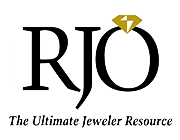Every experienced retailer has an entertaining cache of stories about some “crazy customers” that have acted irrationally in their stores. The stories are frequently amusing and often prompt a listener to reply “Let me tell you about one I had that was even worse.”
Psychological researchers will tell you that irrational behavior is in fact a very predictable practice. The irony is that irrationality can be predicted. If it can be predicted then wise retailers can anticipate the “irrational “ behavior and anticipate these actions in the way their business is conducted. (FYI- I strongly suggest a book called “Predictably Irrational” by Professor Dan Ariely of Duke University. This is undoubtedly the best book on human behavior I have read and will give you great insight into how to put these human tendencies to work for you.)
Here is a proven specific example you might consider for your store.
Think of Goldilocks’ decision-making process. As you will recall, this young lady avoided extremes in chairs, beds and food.. Remember the bowls of porridge that were too hot or too cold. She proclaimed the middle option was “just right.” When you offer choices of similar but different sized products in your showcases (such as diamond studs, diamond crosses or pearls) always offer one choice that is much higher priced. For example, if your current stud assortment stops at 1.5cttw, add a 2.0cttw. size. The 2 ct. pair now become the “too hot” option making the 1.5 ct. pair “just right.”
Make that middle choice at full-margin and at about a 20% higher price than your average sales ticket from that category because you are going to sell more of it. (Avoid promoting items in your cases that bring down your average ticket for that case. The easiest way to grow your sales by 20% is to raise the average ticket for each case in the store by 20%. Make the middle choice at a price that elevates your average ticket by 20% and you’ll raise your entire stores sales.)
Recently, I consulted with a store in Chicago that proved this strategy very well. The store had 3 platforms in one of their cases each with “Your Choice” selections. The price points on the platforms were $1999, $2999 and $4999 respectively. The owner told me his sales of the two lower prices were strong but he, obviously, wished he would sell more $4999 items. I suggested we add a fourth platform featuring “Your choice $6999.” We added the higher priced selection and 90 days later his sales of $4999 items were up by 35%, plus he had sold several pieces from the highest priced platform. He had made the $4999 platform his “just right” selection.
One last example of this strategy at work
Ever look at a wine list in a fine restaurant and wonder about the $500 bottle of wine on the wine list? Who pays those kinds of prices? Answer: Hardly anyone, but the high-ticket item (called a “decoy” in the food trade) does prompt people to open their pocketbook more generously and order a $75 instead of a $40 bottle. People do not like buying the cheapest or the most expensive item on a list…or in a display.
Your specific action step: Look at each of your showcases and find areas where you are offering “middle priced options” that are not as high priced as you think the market should bear. Experiment with a few similar pieces of merchandise at 20% higher prices to make your previous highest priced pieces the new middle choice. Make the new middle pieces at full margin because you are going to sell more of them. Now place the higher price pointed items in the rear of the showcase (closest to the salesperson) so it can be easily reached. Place the least expensive goods near the customer’s side of the showcase and mid-priced merchandise between the two. Now when a client is moving up or down in price, your salesperson simply moves back to front in the case without having to move all over the store. This arrangement makes selling up much easier as the salesperson just moves back a few inches in the case.
Test your new selection offering for 60 days and track your results. Be sure your sales team offers the high priced option to every prospect. That will “anchor” the higher price in your customers mind and make the lower price point seem more appealing. At the end of the test period, evaluate the sales results and expand or rethink the strategy as the results show. If the idea does not work for you, evaluate the “perceived value” of the merchandise involved and be sure you have good choices.
Good luck with implementing this strategy in your own store and let us know how it works for you. If you have questions, contact me. I am always happy to help.
Larry Johnson is the author of “The complete guide to effective jewelry display.” He is CEO of Larry Johnson Consulting based in Colleyville, Texas. He works with independent jewellery retailers around the world to increase their profits through better display techniques. In addition, his firm offers a complete on-line display training course for retailers. He can be reached at Larry@LarryJohnsonConsulting.com or 817-980-2135.




